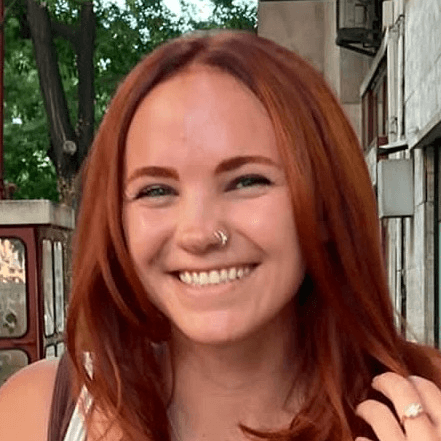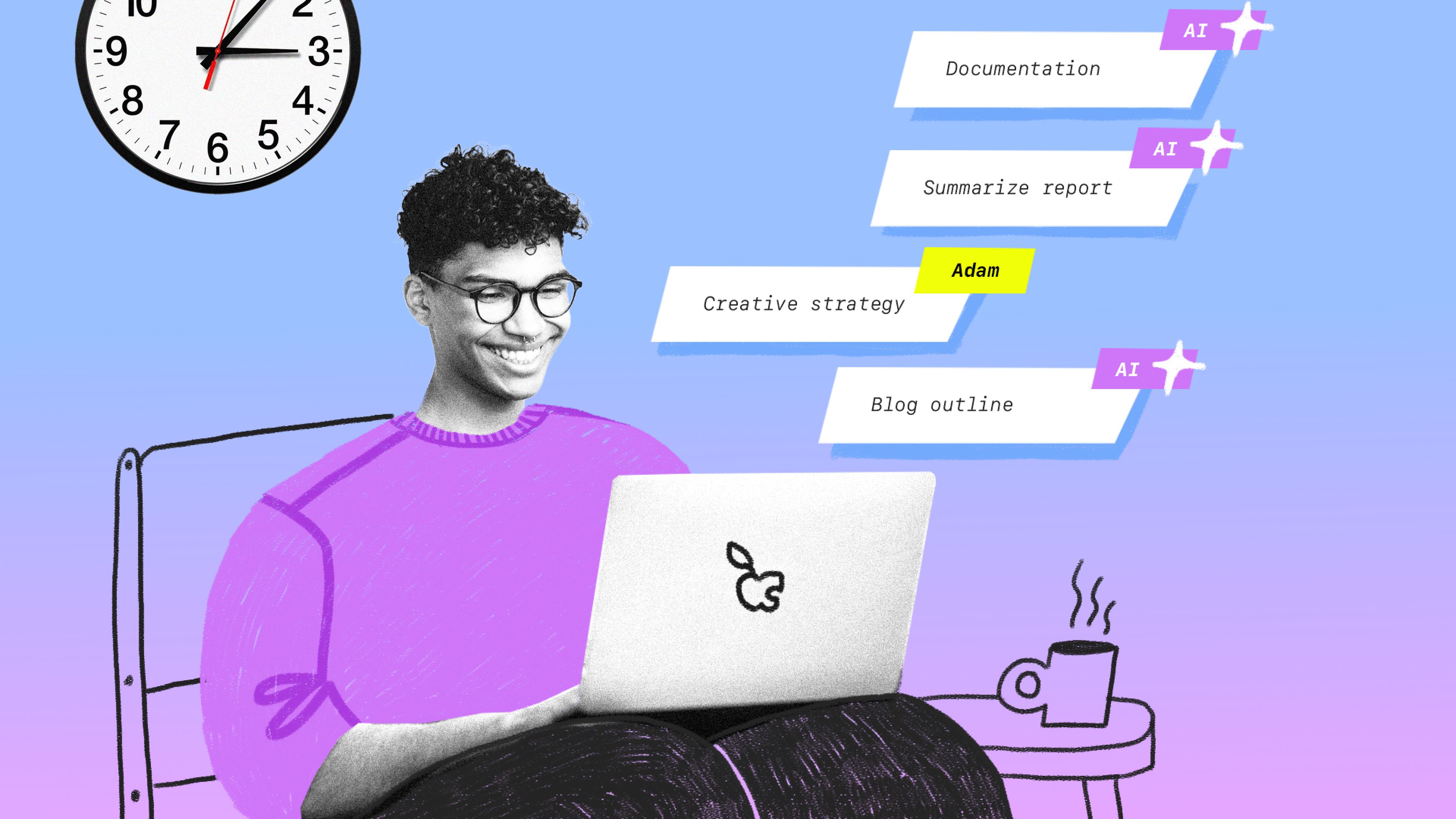AI in the enterprise
– 11 min read
The B2B checklist:
8 criteria for evaluating
AI writing + editing software

We’re all reading about AI coming for our writing and editing jobs. And while it’s true that AI is playing an increasingly important role on content and editorial teams, there’s no need to panic just yet. That said, AI can be a valuable ally in your quest to help level-up writing skills across the entire company, and give your best writers a productivity and creativity boost.
And with so many tools on the market, it’s crucial to select the right tool for you. We’ve scoped out what criteria you should look for and what benefits each will have for your business — so that you can make a choice that is adopted by your users and achieves ROI for your business.
Ideate
1. Original content generation
Top benefit:
Save time writing copy; use your best content as training data for more consistent outcomes; overcome dreaded writer’s block
The first few generations of an AI writing assistant were little more than spellcheckers. Most AI writing assistants will now help with grammar, clarity, and fluency, and a few will go even further and help users ideate and write original content based on short, directive inputs. Yes, your AI writing assistant can be producing high-quality, original, fact-based content. This means less time spent scratching heads staring at an empty blog post, and more time coming up with creative projects and campaigns.
Look for tools that come with AI app creation. You can fine-tune these models to best represent your voice and make models that fit the kind of content you want to create.
Some tools include pre-made apps, which can help users see what’s possible and get started quickly.
Examples of common AI writing pre-created apps:
- Blog posts/outlines
- Facebook/Google ad copy
- Email subject lines
Sarah Mohs, Senior Content Architect at Intuit, uses AI apps from Writer to supplement their content team’s process.
“I think using AI to help augment the writing process, not overtake it, is something that our teams understand. I think content designers have all experienced that anxiety that occurs on a blank page, and so many content designers are being asked to create content faster and are given remarkably little time to brainstorm and let things marinate and edit and go away and come back.”
You may not like what your AI writing tool creates on the first go. Select one that’ll let you redraft and create variants of content. A solid writing tool should be able to produce original writing until you’re satisfied, and with a sub-30-second response time.
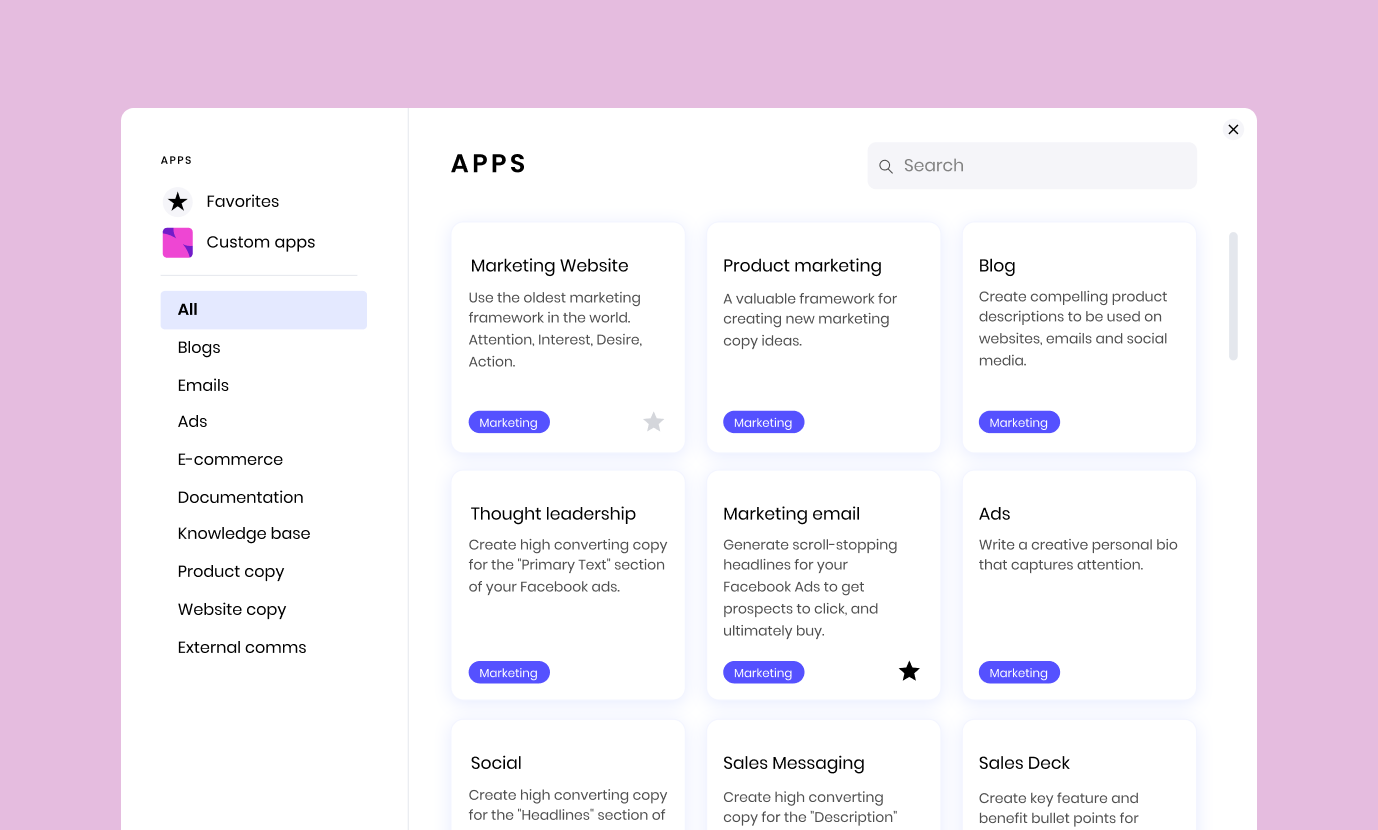
Write
2. Terms and brand messaging
Top benefit:
Maintain brand consistency
Achieve complete consistency when you choose an AI writing and editing tool that helps your entire team adhere to your company’s taxonomy and brand messaging.
When you create a term bank, you’re giving your team the do’s and don’ts on what specific words to use (or not use), and the reasoning behind the suggestions. This has strategic benefits: you’re educating everyone on your brand as they write.
Examples of what to include in your term bank:
- Branded words
- Product taxonomy
- Official verbiage
- SEO head terms
- Common mistakes
- Banned words
You can choose to organize your terms by tags or teams to make things easier for everyone. Leaning on an AI writing and editing tool that enforces these terms and brand messaging will help you avoid confusion across departments and strengthen your brand.
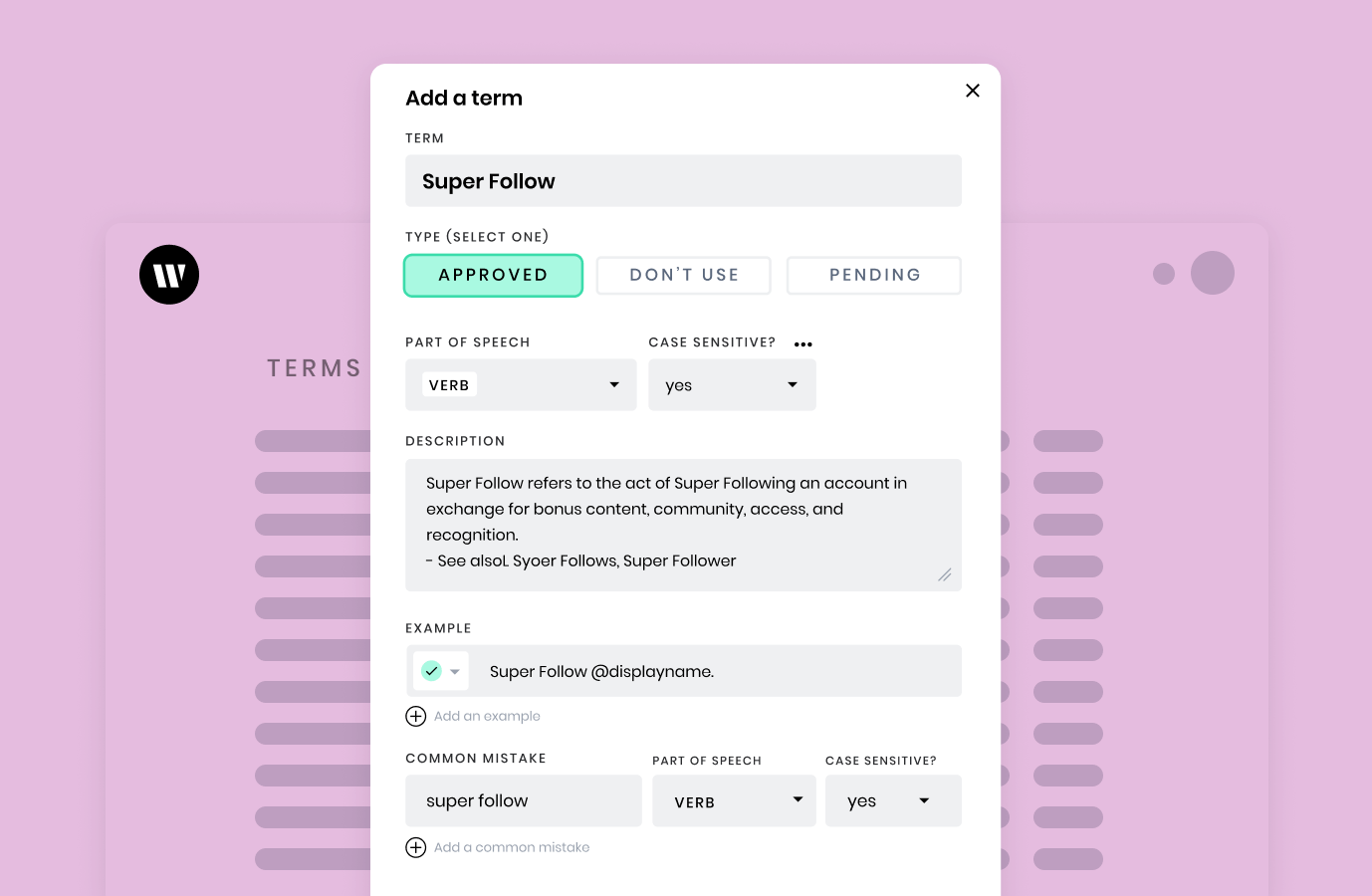
3. Snippets
Top benefit:
Content consistency; authoring speed; compliance
Not everything we write at work needs to be original. In fact, for many use cases, repeat, repeat, repeat is the name of the game. An AI writing tool can store messages such as boilerplate, value prop, customer quotes, author bios, About Us statements, and more, as “snippets.”
Snippets are reusable content. By typing a shortcut that your writing tool recognizes, you can save time trying to track down the exact wording because the AI will do it for you.
Examples of when to use snippets:
- Product messaging / descriptions
- Support email
- Sales email
- Compliance or legal must-have language
These apps can be used for short-form, paragraph-length content or for longer-form content. Formatting can be preserved through customization to include links, bullet points, and placeholders for dynamic content.
For Deedi Brown, the Senior Editor and Content Strategist at Ellevest, Writer’s snippets best serve the company in their disclosures practice.
“Having snippets right in the Writer sidebar has helped us make sure that we are being more compliant and it’s just made everything more efficient.”
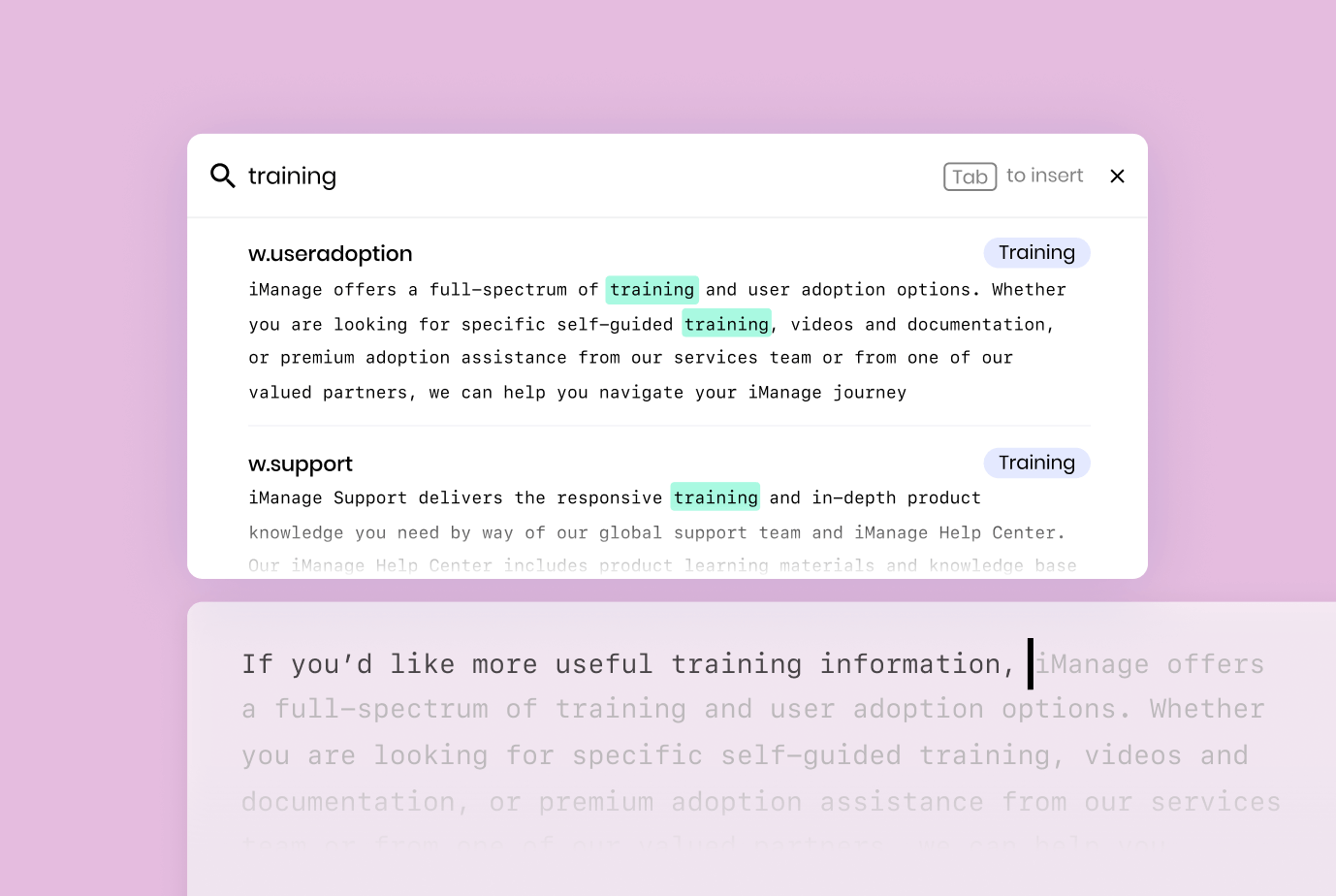
Snippets are built to work wherever your writing assistant works and can be organized by tags or teams to keep everything neat and structured for your business.
Edit
4. Style guide
Top benefit:
Make sure everyone adheres to the same writing guidelines; single source of truth for style guidelines
Creating a style guide is a hard, but well-worth-it task. Don’t let your efforts go to waste: find an AI writing assistant that’ll make your style guide easily available to everyone on your team.
With the right integrations, your AI writing and editing tool can look to your style guide as the guidelines for all its suggestions, from punctuation preferences to date, time, and number notation preferences. An online style guide can serve as the single source of truth for your entire team and keeps everyone on-brand, consistent, and less confused.
Most style guides start with the principles of great writing: free of errors, clear, and concise. Look for an AI writing assistant that prioritizes these types of suggestions.
Some AI writing assistants can also offer suggestions to rephrase your writing in certain pre-set ways. This technology can follow custom rules you set, i.e., to rephrase content to be shorter or clearer, or adhere to the basic tenets of your company voice.
Examples of how an AI writing assistant can improve your writing:
- Analyze sentence and paragraph length
- Analyze reading level and reading time
- Recognize jargon and cliches
- Correct spelling, grammar, and punctuation
- Check for inclusive writing
- Detect plagiarism
Publish confidently when you run your writing through an AI writing assistant that focuses on alignment to your style guide. When your entire team is using the same tool, you can rest easy knowing that whatever gets published is well-written and on-brand.
Twitter’s Director of Content Design, Jordan Craig, says Writer helps ensure Twitter’s different teams are on the same page when it comes to writing guidelines.
“It’s been really monumental for us to have a single source of truth in Writer and for people to be able to give us feedback on the guidelines. And we’re also able to give them automated feedback on their writing, too.”
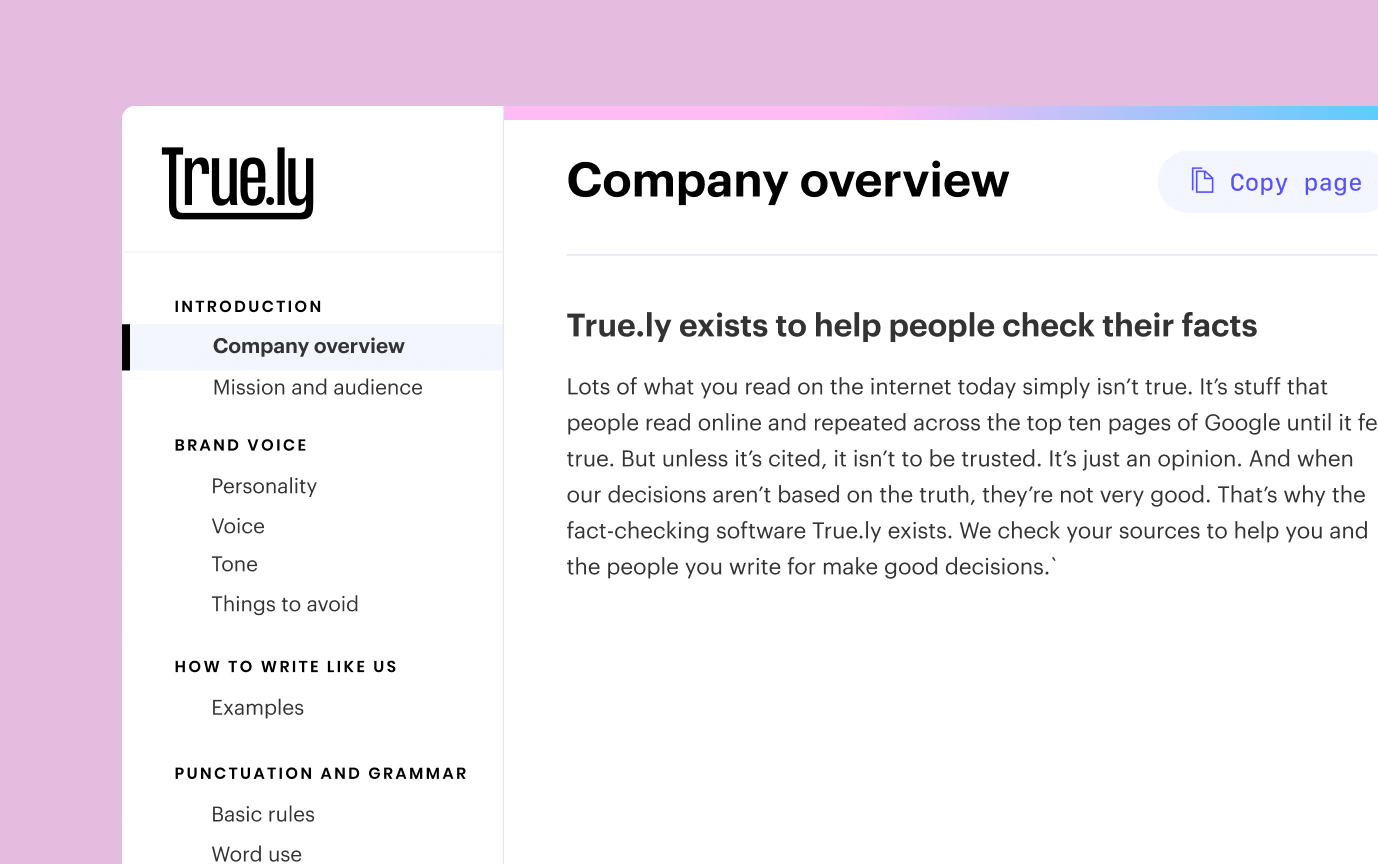
“It’s been really monumental for us to have a single source of truth in Writer.”

Jordan Craig
Director, Content Design, Twitter
5. Extensions
Top benefit:
Take the AI writing assistant with you
There are some tools that exist solely on their own domains, and allow you to copy and paste your content into a text box in order to be checked. Some of your users may even have free tools like this bookmarked.
For real user adoption, you’re going to want an AI writing and editing tool that gives you real-time suggestions wherever you’re writing. Select an AI writing assistant that features browser extensions and desktop add-ons so it can work with you wherever you’re writing your content.
Examples of where your writing tool can function:
- Google Docs
- Microsoft Office 365
- Google Chrome
- Contentful
- Word
- PowerPoint
- Outlook
- Figma
You might not want to be receiving stylistic corrections when you’re just drafting a personal email to a friend or updating your Facebook status. Look for an AI editing browser extension that allows for toggling to turn on or off writing suggestions depending on the website you’re using. Fuller-featured tools will allow you to do this for groups of users.

6. Admin controls
Top benefit:
Structure your teams and your rules however you want
If you’re using an AI writing assistant for an entire team or multiple teams, it’s essential that you can set certain controls. You might not want every user to have access to everything, so go with a tool that lets you control various aspects.
No company functions the same, and you should be able to structure things in whatever way you want. Organization is one key to a happy, productive team. Find an AI writing tool that fits your needs and lets you customize things to your liking.
You might want different term banks for different teams — or even entirely new style guides. This can all be possible with the right AI tool.
Examples of controls to expect from your writing tool:
- User roles and permissions
- SSO and SCIM
- Configurable email notifications
- Custom score calculation
- Plugins controls
- API access
The business impact of integrating AI writing and editing into your workflows can be incredible — but you need to make sure you’ve selected a tool that will enable the adoption you crave and the admin controls you need.
7. Reporting
Top benefit:
Understand how your team is using your AI writing tool to get the most out of it
It’s important to know what’s working and what isn’t when it comes to your team’s tool stack — the usefulness of your AI writing tool shouldn’t be any different.
Choose a writing tool that gives you detailed reports on usage. Learn what features your team is using consistently and glean valuable writing and brand insights that you can use to guide training efforts.
See what common mistakes your users are making, and with that information, update your style guide, term bank, or snippets accordingly.
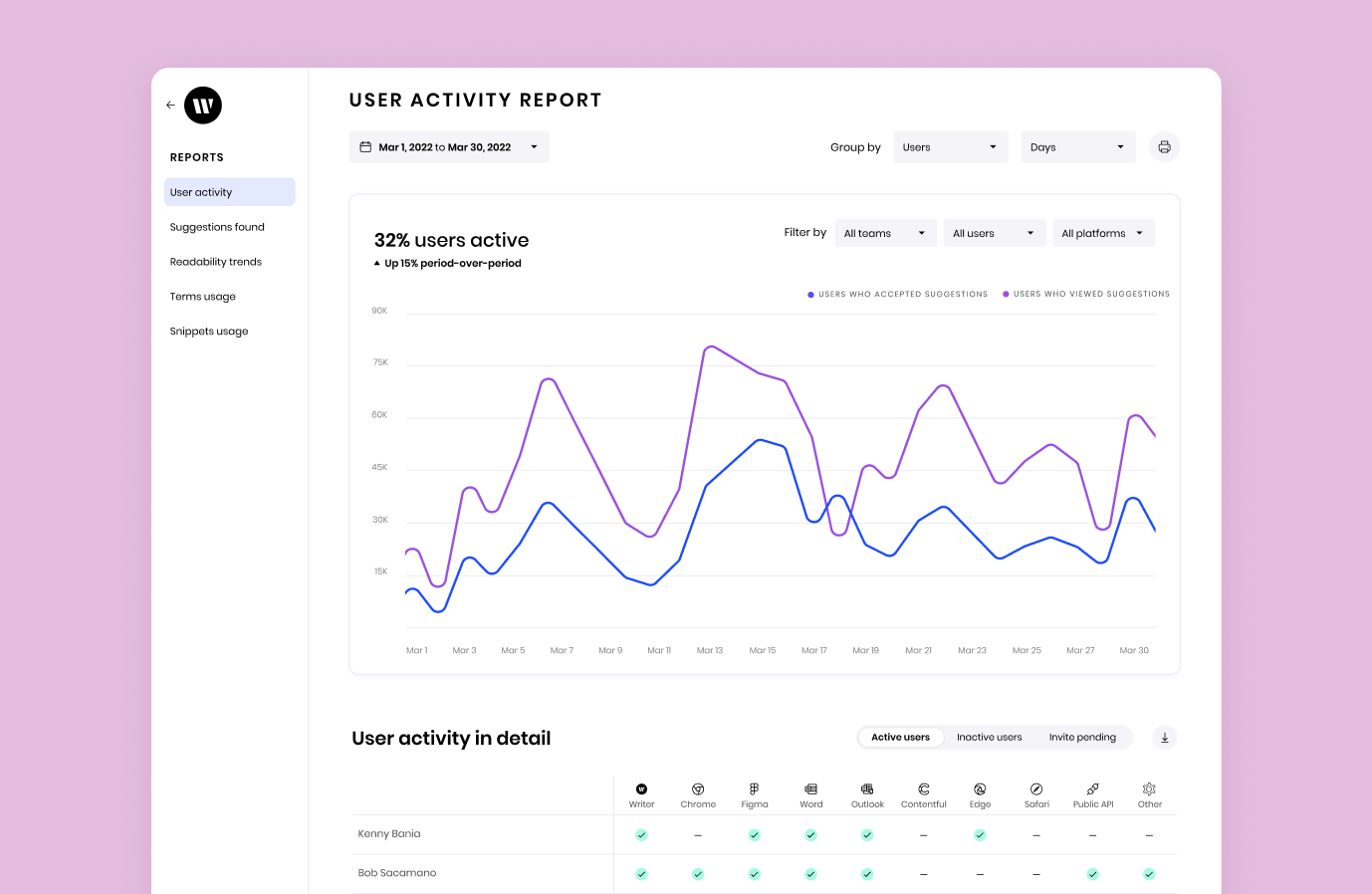
8. Security
Top benefit:
Keep your company’s data out of the public domain; get a tool approved by infosec
Your data shouldn’t be used by your vendors, but with most AI writing assistants, you’ll need to read the fine print of the tools’ terms and conditions. Some AI writing assistants are guilty of keystroke logging — meaning the AI logs users’ keystrokes and sends them to a third party. This leaves IT teams and businesses vulnerable.
It’s critical that you’re aware of your AI writing assistant’s security measures. Otherwise, you might unknowingly be giving permission for them to store a copy of everything you’re typing into their system.
Rest assured knowing that with Writer, what you write will never make it into our machine learning models — we analyze content transiently and don’t store your data.
Examples of security measures to look for:
- SOC2 Type 2
- GDPR
- HIPAA
- Dedicated security personnel
Be sure to check that there are proper security measures in place before you go offering your valuable words and content up to AI.
Bonus
End user experience
Top benefit:
A tool so easy to use your users know what to do as soon as they sign up
A tedious installation or a confusing configuration can make or break your decision to use a product, and a difficult product UX is less likely to be adopted by your team.
An AI writing and editing tool that offers self-installation and self-onboarding is bound to make your life easier. And if any issues arise, there should always be a customer success team available to help if needed. Constant support — whenever you need it — and helpful onboarding videos or training manuals should be expected.
Choose a tool that’s easy to use right from the jump. Skip all the unnecessary, confusing steps and get to the important stuff: writing.
Reference this checklist to make an informed decision when selecting your AI writing tool. Human writers and editors aren’t going anywhere — we’re just taking advantage of the evolving resources at our fingertips.

